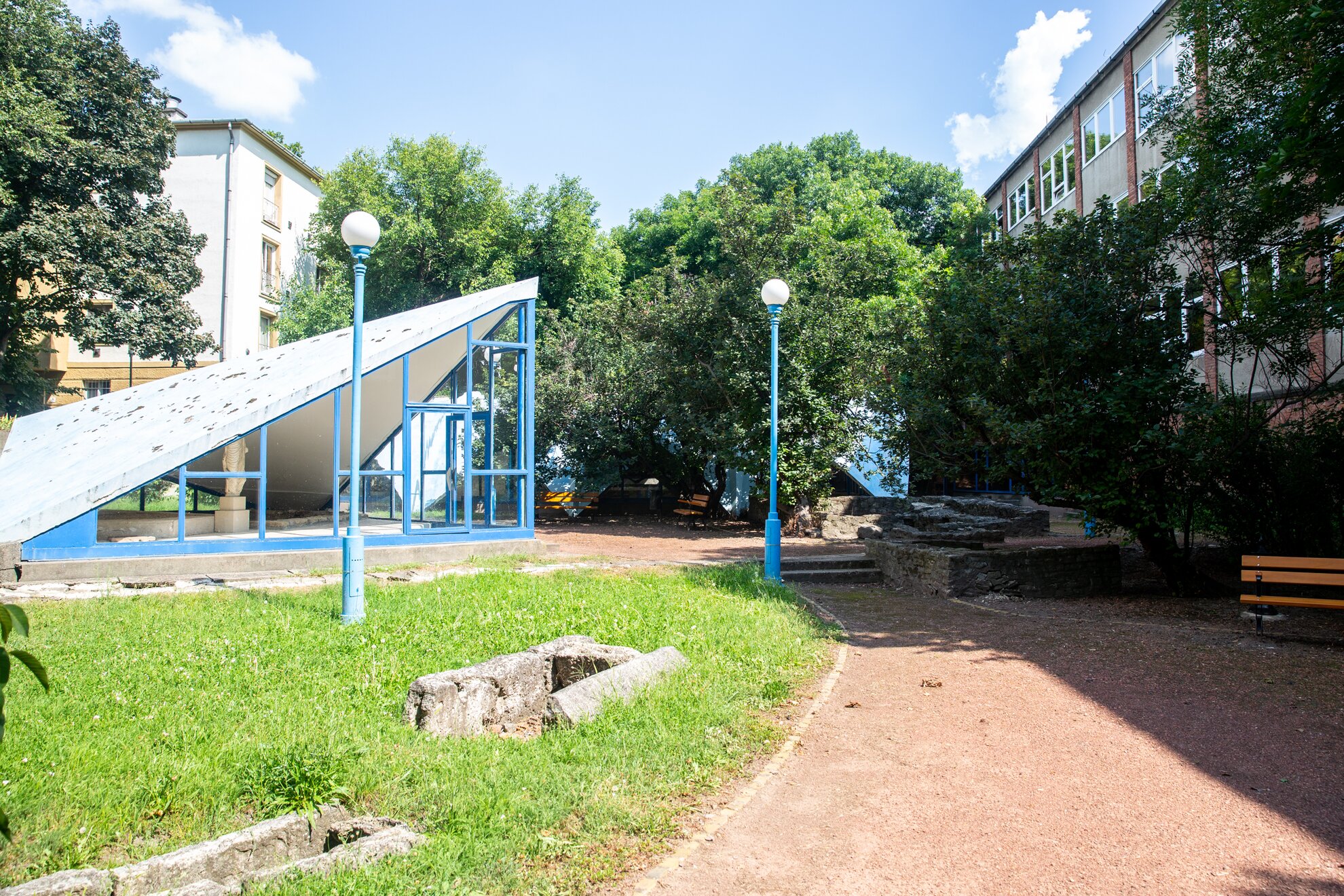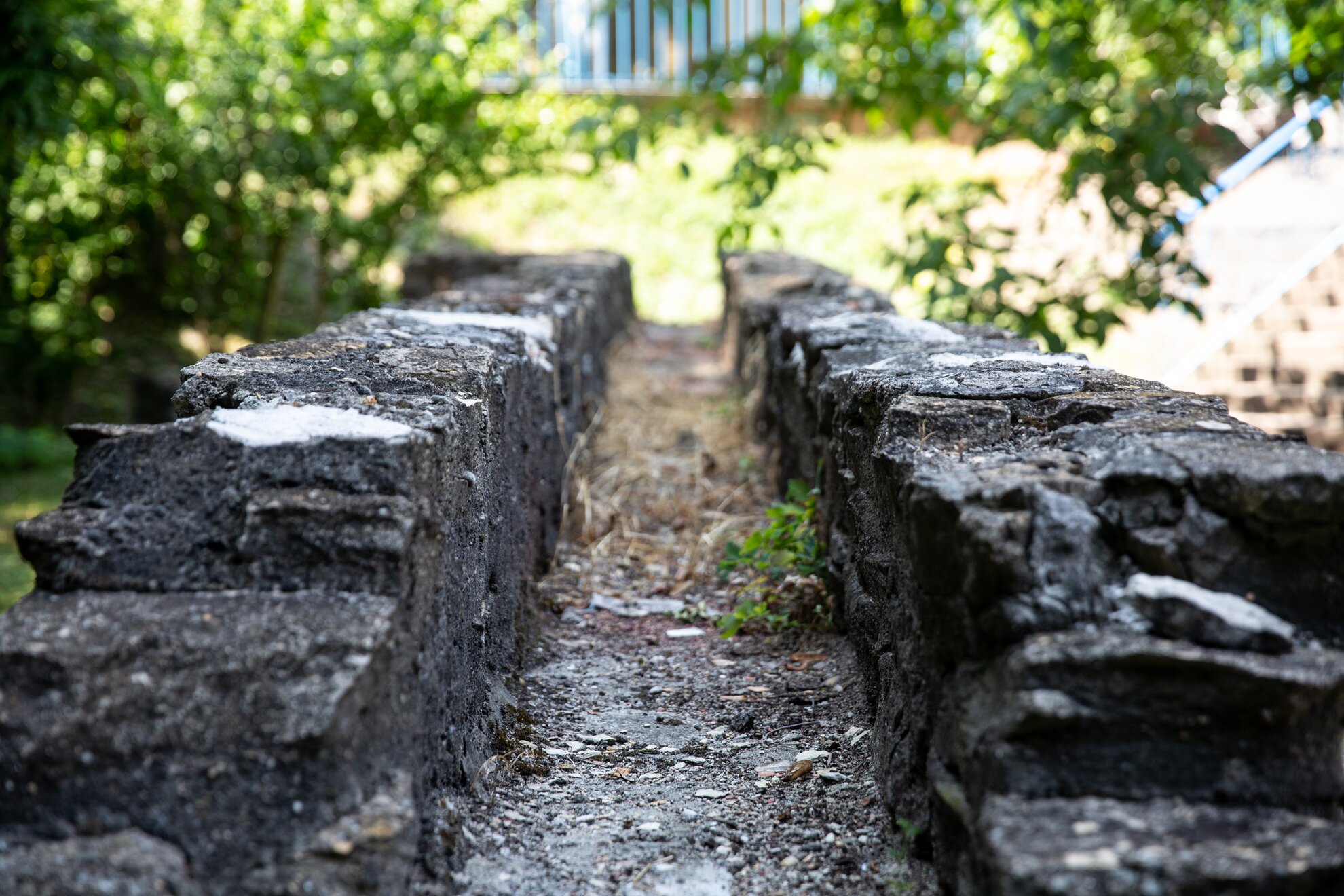Ancient Roman ruins are found in profusion around Óbuda, often in stark contrast with the monolithic panel-building apartments that currently dominate this supremely historic north-Buda district. About 1,900 years ago, this area was a thriving outpost of Rome’s remote Pannonia province – thousands of legionnaires were posted in barracks spread around the parkland and interchanges of modern-day Flórian tér, while some 50,000 residents filled the labyrinthine community of Aquincum, now an open-air museum known as the Hungarian Pompeii.

Nonetheless, the Hercules Villa is unique – a sumptuous complex that once belonged to an unknown member of ancient Rome’s upper one percent, equipped with luxuries like running water, heated floors, a sewer system and varied chambers for private use and entertaining guests, all easy to visualise while you roam the well-preserved grounds.

Most astounding are the mosaics, featuring delicately crafted characters ranging from Cupid to a bleeding boxer to the mythical strongman whose name graces this sister museum to Aquincum, which is located at a separate site within walking distance from Flórian tér.

After the construction workers experienced their surprise of a lifetime 60 years ago, Hungarian archaeologist István Wellner led the excavation of Hercules Villa, a project lasting though 1961. The team uncovered multiple wings built during the latter half of the 2nd century AD, all decorated with extraordinarily artful mosaics that capture fanciful scenes with careful colour shading and emotive visual stories.

Fortunately, plans for the new school were redrawn to preserve the ancient structures (students now idly stare at the archeological site through classroom windows next door), with the palace’s semicircular assembly hall located underneath the school building.

Here the largely intact grand-scale mosaic presents a wine-harvest celebration to honour Bacchus, including a tipsy Hercules alongside Amor – ancient Rome’s version of Cupid – making an offering of grapes to an attacking tiger.

An adjacent wing has a pair of connected rooms that were most likely the homeowner’s private quarters, all featuring magnificent mosaics that must have cost a fortune to install. The first chamber’s floor is designed with an intriguing geometrical pattern of interlocking squares, rectangles and diamonds in red, black, and white tile, crafted with obvious expertise.

The next room also has a floor mosaic with a patterned border, but its centrepiece was the greatest treasure of this site: an extremely detailed mosaic of Hercules with Deianira, created with some 60,000 tiny tiles to give the artwork visual depth with subtle shades of pixilated colour.

Archaeologists believe that the artwork was created in Alexandria and imported here, making it especially valuable both then and now. For its preservation, this mosaic was removed and now appears in the Aquincum Museum, but a photograph of the original tile masterpiece provides an inkling of how impressive this artwork must have appeared to visitors of the lord’s intimate lodgings.

Not far from these chambers, the private bathhouse also features a mosaic that verifies the original owner’s affinity for macho strength: a pair of boxers appear within the floor tiles, one standing victorious while the other sits with blood flowing from his forehead.

While the mythical images of Hercules Villa are impressive, this pair of pugilists is especially fascinating because we can see the actual accoutrements of real Roman boxers in this mosaic, including their gloves, a palm-branch trophy and scrapers used by the athletes to remove sand and oil from their skin.

Alas, as the decline of ancient Rome saw this region increasingly besieged, Hercules Villa was abandoned by the dawn of the 4th century AD, the grounds then used as a cemetery; a few late-Roman sarcophagi from this time are displayed amid the open-air museum. The inscriptions on the tombs are still clearly visible, providing a pleasant challenge for any visitors who studied Latin.

Earlier this year, the museum facilities of Hercules Villa were restored with fresh coats of paint on the modern structures that protect the ruins, while the ticket office and bathrooms were renovated, and the sarcophagi displays freshened up. However, the attraction of Hercules Villa is not its contemporary presentation, but its showcase of tasteful home décor that miraculously survived centuries of neglect; anyone who has ever overseen a kitchen or bathroom renovation in their house will marvel at the top-quality craftsmanship of this ancient palace.

And we can only wonder what other artistic treasures lie buried under Óbuda’s nearby panel buildings – based on the erstwhile opulence of Hercules Villa, archaeologists are certain that it was but one palatial home in a posh neighbourhood of wealthy ancient Romans living in Pannonia’s once-booming metropolis, now covered by Budapest’s bustling streets.
Hercules Villa
District III, Meggyfa utca 21
Open: Sun 11am-1pm, Apr 15-Oct 28 More details




